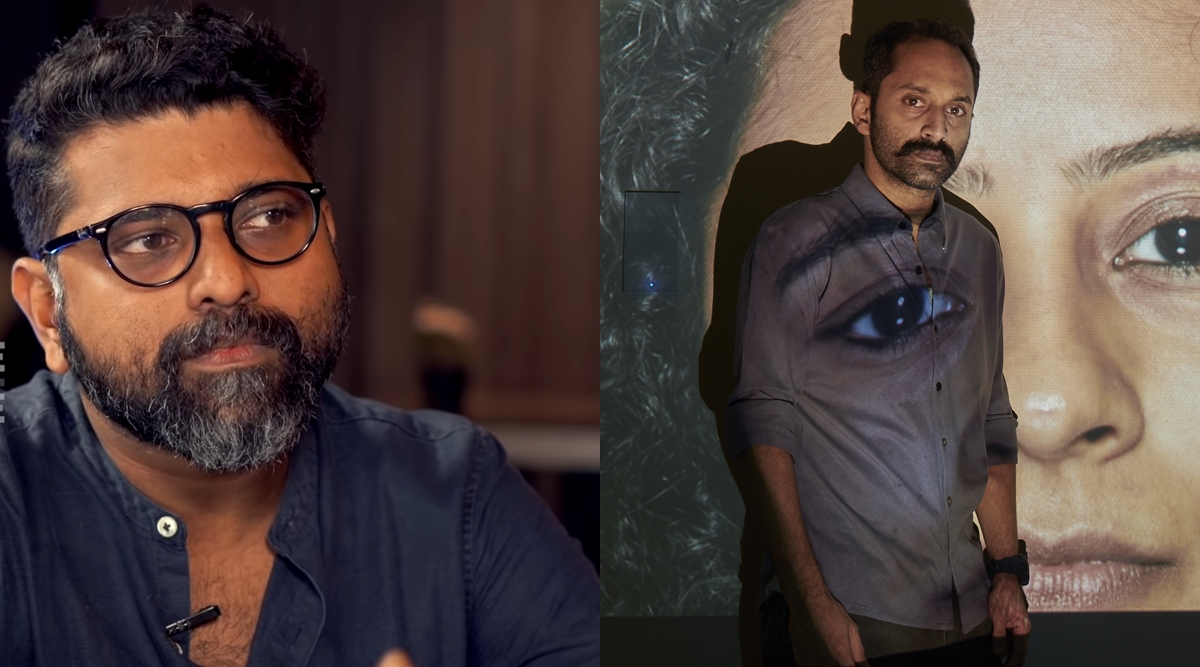 Mahesh Narayanan's C U Soon will stream on Amazon Prime Video. (PHOTOS: THE CUE/YOUTUBE AND AMAZON PRIME VIDEO)
Mahesh Narayanan's C U Soon will stream on Amazon Prime Video. (PHOTOS: THE CUE/YOUTUBE AND AMAZON PRIME VIDEO)Mahesh Narayanan is among the few fortunate filmmakers who were able to write, shoot and finish post-production of a movie, just in time to release digitally for Onam festival. The majority of the film industry, however, is still struggling to get back on its feet after being knocked down by coronavirus pandemic.
Mahesh’s C U Soon was shot in a restricted environment with bare minimum resources, courtesy the lockdown. But, he doesn’t consider it a ‘lockdown film.’ “Since it is a computer screen-based film, it would have been made the same way even if there was no lockdown,” he said in an exclusive conversation with indianexpress.com.
C U Soon, starring Fahadh Faasil, Roshan Mathew and Darshana Rajendran, will premiere globally on Amazon Prime Video on September 1, 2020.
Below are excerpts from the conversation with Mahesh Narayanan:
The trailer was gripping. For me, the highlight was the sound that followed when Fahadh Faasil opened his Apple laptop. It is a small thing, but it gives the film such an original touch. What can you tell us about creating sound design for a movie, which is filled with mouse click sounds, the opening and closing of apps?
The sound design for the film was done by Kunal Rajan who lives in LA. He worked on Kamal Haasan’s film Vishwaroopam. And I have known him since then. He has worked on a lot of international projects, and he is very effective in creating such sounds. I consider sound much more superior to visual. Sound is the first format which became digital before visuals. Since visuals in this film are all computer screen-based, I also wanted that claustrophobic theme in the sound.
How did the idea for C U Soon come to you?
Malik was supposed to release in April. We were all ready, but it didn’t happen because of the lockdown. Fahadh and I stay in touch on a daily basis. I had shared a video with him, which I got from my journalist friend. It was about a Malayali girl. It was interesting in terms of how it was filmed. It was also morbid and shocking. It was communicating a lot. Fahadh asked me if we could plan something on it. So I thought we could give it a try. I had the storyline which I explained to him. And I wrote it in the next three or four days. It slowly transformed into the format you will see soon.
Also, in this day and age, is it that easy to make a movie?
Every movie is tough. Maybe this idea was lying with me for a long time, that’s why I was able to write the film so fast. And it is a new format for the Indian audience. Normally, you introduce the hero and heroine. In this case, I had to introduce the format to the audience, so that they don’t expect anything else. It was a learning process for me and I enjoyed it.
Did Hollywood movie Searching inspire you to pick this style?
There are a lot of computer screen-based films. I have been seeing such films since 2002 like The Collingswood Story and Unfriended. Even after Searching, the same producer also did a film called Profile. All computer screen-based films look the same. The format is also the same. But, the entire storyline is different.
Was this film shot in Dubai, especially the metro sequences?
No, the entire film was shot in Kochi. The metro sequences were shot by the second unit in Dubai. My assistant sent me the footage, and I edited it into the film.
What are the responsibilities of a virtual cinematographer?
This entire film is shot with a single lens. There is no conventional close-up, mid-shot, wide-shot. But, you will see all such shots in the movie. But, those are all computer-generated. We have generated an entire scenario like how a pan or tilt-up should go. Everything was generated digitally, and that’s called virtual cinematography.
They say a film is made in the editing room. Now, for the films you write and direct, do you stick to the script even in the editing room?
My final draft is always coming from my editing room. But, I go to shoot with a complete draft. Even while narrating the story to an actor or technician, I go with the draft.
Read the interview in Malayalam
What is the benefit of having an actor like Fahadh Faasil not just as a producer but also a cast member?
Fahadh Faasil doesn’t compromise on anything. He keeps pushing for more. I am happy that we are good friends. And we interact with each other constantly and not just while working together. As an actor, he is involved in the film and that is very important for a director. There will be arguments and fights (on the sets). That’s usual. At the end of the day, we’re trying to make a (good) film. We understand each other very well.